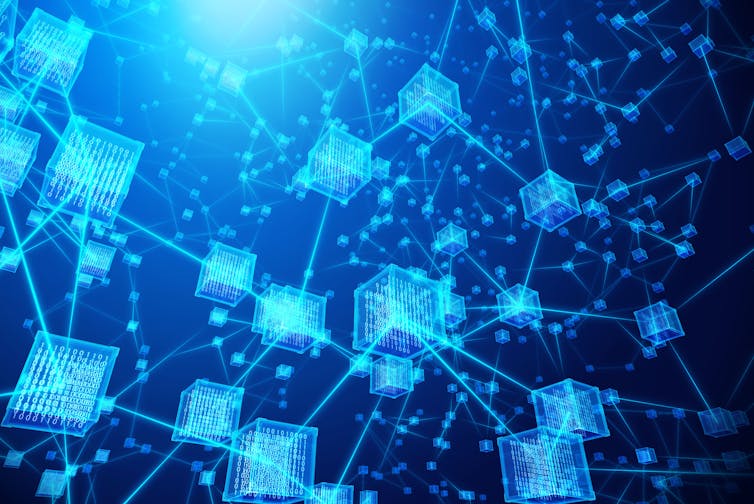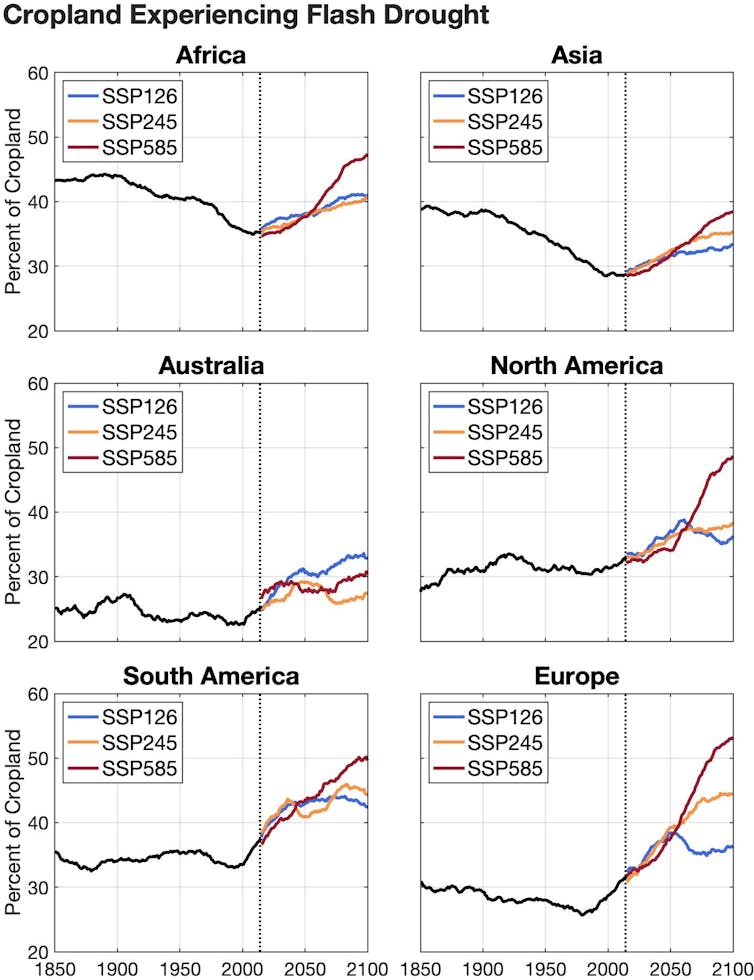
Media influences and conventional beauty standards have long plagued society.
This issue took on new urgency in May 2023 when the U.S. surgeon general issued a major public advisory over the links between social media and youth mental health.
Research shows that images of beauty as depicted in movies, television and magazines can lead to mental illness, issues with disordered eating and body image dissatisfaction.
These trends have been documented in women and men, in the LGBTQ+ community and in people of different racial and ethnic backgrounds.
Experts have long suspected that social media may be playing a role in the growing mental health crisis in young people. However, the surgeon general’s warning is one of the first public warnings supported by robust research.
Social media can be toxic
Body dissatisfaction among children and adolescents is commonplace and has been linked to decreased quality of life, worsened mood and unhealthy eating habits.
As an eating disorder and anxiety specialist, I regularly work with clients who experience eating disorder symptoms, self-esteem issues and anxiety related to social media.
I also have firsthand experience with this topic: I am 15 years post-recovery from an eating disorder, and I grew up when people were beginning to widely use social media. In my view, the impact of social media on diet and exercise patterns needs to be further researched to inform future policy directions, school programming and therapeutic treatment.
The mental health of adolescents and teens has been declining for the past decade, and the COVID-19 pandemic contributed to worsening youth mental health and brought it into the spotlight. As the mental health crisis surges, researchers have been taking a close look at the role of social media in these increasing mental health concerns.
The pros and cons of social media
About 95% of children and adolescents in the U.S. between the ages of 10 and 17 are using social media almost constantly.
Research has shown that social media can be beneficial for finding community support. However, studies have also shown that the use of social media contributes to social comparisons, unrealistic expectations and negative mental health effects.
In addition, those who have preexisting mental health conditions tend to spend more time on social media. People in that category are more likely to self-objectify and internalize the thin body ideal. Women and people with preexisting body image concerns are more likely to feel worse about their bodies and themselves after they spend time on social media.
A breeding ground for eating disorders
A recent review found that, as with mass media, the use of social media is a risk factor for the development of an eating disorder, body image dissatisfaction and disordered eating. In this review, social media use was shown to contribute to negative self-esteem, social comparisons, decreased emotional regulation and idealized self-presentation that negatively influenced body image.
Another study, called the Dove Self-Esteem Project, published in April 2023, found that 9 in 10 children and adolescents ages 10 to 17 are exposed to toxic beauty content on social media and 1 in 2 say that this has an impact on their mental health.
Eating disorders are complex mental illnesses that develop because of biological, social and psychological factors. Eating disorder hospitalizations and the need for treatment have dramatically increased during the pandemic.
Some reasons for this include isolation, food scarcity, boredom and social media content related to weight gain, such as the “quarantine15.” That was a reference to the weight gain some people were experiencing at the beginning of the pandemic, similar to the “freshman 15” belief that one will gain 15 pounds in the first year of college. Many teens whose routines were disrupted by the pandemic turned to eating disorder behaviors for an often-false sense of control or were influenced by family members who held unhealthy beliefs around food and exercise.
Researchers have also found that increased time at home during the pandemic led to more social media use by young people and therefore more exposure to toxic body image and dieting social media content.
While social media alone will not cause eating disorders, societal beliefs about beauty, which are amplified by social media, can contribute to the development of eating disorders.
‘Thinspo’ and ‘fitspo’
Toxic beauty standards online include the normalization of cosmetic and surgical procedures and pro-eating-disorder content, which promotes and romanticizes eating disorders. For instance, social media sites have promoted trends such as “thinspo,” which is focused on the thin ideal, and “fitspo,” which perpetuates the belief of there being a perfect body that can be achieved with dieting, supplements and excessive exercise.
Research has shown that social media content encouraging “clean eating” or dieting through pseudoscientific claims can lead to obsessive behavior around dietary patterns. These unfounded “wellness” posts can lead to weight cycling, yo-yo dieting, chronic stress, body dissatisfaction and higher likelihood of muscular and thin-ideal internalization.
Some social media posts feature pro-eating-disorder content, which directly or indirectly encourages disordered eating. Other posts promote deliberate manipulation of one’s body, using harmful quotes such as “nothing tastes as good as thin feels.” These posts provide a false sense of connection, allowing users to bond over a shared goal of losing weight, altering one’s appearance and continuing patterns of disordered eating.
While young people can often recognize and understand toxic beauty advice’s effects on their self-esteem, they may still continue to engage with this content. This is in part because friends, influencers and social media algorithms encourage people to follow certain accounts.
How policy changes could help
Legislators across the U.S. are proposing different regulations for social media sites.
Policy recommendations include increased transparency from social media companies, creation of higher standards of privacy for children’s data and possible tax incentives and social responsibility initiatives that would discourage companies and marketers from using altered photos.
Phone-free zones
Small steps at home to cut down on social media consumption can also make a difference. Parents and caregivers can create phone-free periods for the family. Examples of this include putting phones away while the family watches a movie together or during mealtimes.
Adults can also help by modeling healthy social media behaviors and encouraging children and adolescents to focus on building connections and engaging in valued activities.
Mindful social media consumption is another helpful approach. This requires recognizing what one is feeling during social media scrolling. If spending time on social media makes you feel worse about yourself or seems to be causing mood changes in your child, it may be time to change how you or your child interact with social media.
Emily Hemendinger, Assistant Professor of Psychiatry, University of Colorado Anschutz Medical Campus
This article is republished from The Conversation under a Creative Commons license.


 Luxury Renovations are geared toward the enjoyment of a home. They might be as easy as updating an entertainment room or reworking existing landscaping or as complex as adding a swimming pool, hot tub, outdoor kitchen or fitness area.
Luxury Renovations are geared toward the enjoyment of a home. They might be as easy as updating an entertainment room or reworking existing landscaping or as complex as adding a swimming pool, hot tub, outdoor kitchen or fitness area.


















 Epsom Salt – Named for a bitter saline spring at Epsom in Surrey, England, Epsom salt is not actually salt but a naturally occurring mineral compound of magnesium sulfate. Long known as a natural remedy for several ailments, Epsom salt can be used to relax muscles and relieve pain in the shoulders, neck and back. It can also be applied to sunburns or dissolved in the bath to help relieve sore muscles or detox.
Epsom Salt – Named for a bitter saline spring at Epsom in Surrey, England, Epsom salt is not actually salt but a naturally occurring mineral compound of magnesium sulfate. Long known as a natural remedy for several ailments, Epsom salt can be used to relax muscles and relieve pain in the shoulders, neck and back. It can also be applied to sunburns or dissolved in the bath to help relieve sore muscles or detox.
